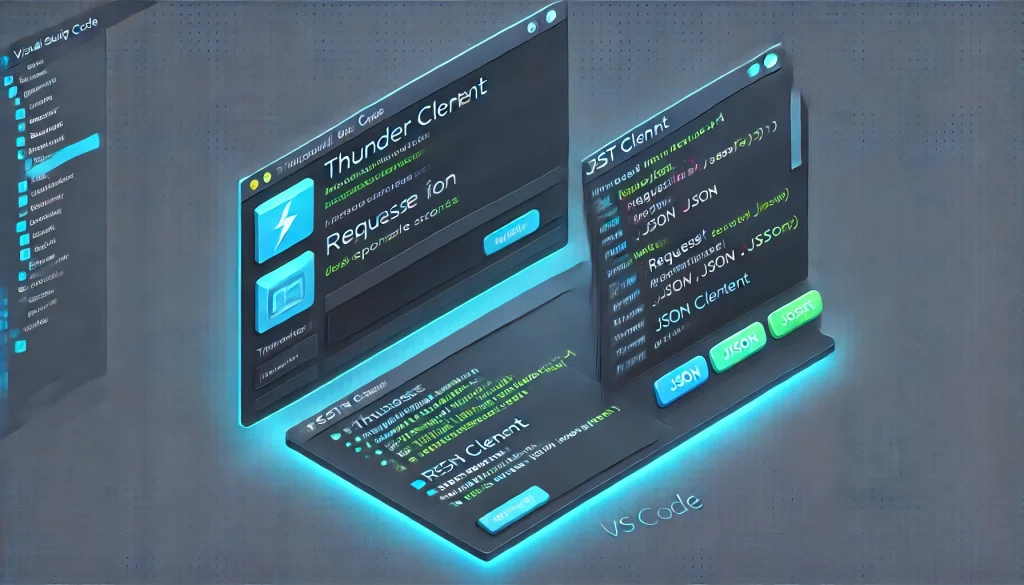Postman has become a go-to for API testing, but it’s not the only game in town—nor is it completely free of limits. Below are 12 free or open-source solutions that help you send requests, debug endpoints, and handle everything from REST to GraphQL. Whether you’re looking for a simpler UI, text-based approach, or a specialized GraphQL client, these tools can offer robust functionality without the paywalls.
1. Insomnia
Why It’s Great
- Multi-Protocol: Supports REST, GraphQL, gRPC, WebSocket, letting you unify all your API calls in one tool.
- Encryption & Team Sync: Offers environment variable encryption plus an optional paid plan for collaboration.
- Open Source Core: The desktop app has a free, open-source foundation.
Use Case:
- Dev teams wanting a polished UI like Postman but with advanced features for GraphQL or gRPC.
- Storing multiple environments (dev, staging, prod) in single workspace for easy switching.
2. Hoppscotch (formerly Postwoman)
Why It’s Unique
- Web-Based: Entirely in the browser, no install needed.
- Open Source: Maintained on GitHub, so you can self-host if desired.
- Real-Time Collaboration: Some features let you share requests or environment setups with peers.
Use Case:
- Quick, ephemeral testing from any device.
- Alternative to Postman’s web version, especially for devs who want a fully open-source route.
Bonus: Built with Vue, it sports minimal overhead and a snappy interface.
3. Thunder Client (VS Code Extension)

Why It’s Handy
- Inside VS Code: Add a panel to test APIs without switching from your code editor.
- Lightweight: Less memory usage than external apps, focusing on JSON-based REST calls.
- Simple UI: Minimal config for environment variables or request chaining.
Use Case:
- Developers who prefer staying in VS Code to handle quick endpoints or debug responses inline.
- A replacement for built-in CLI calls or separate windows for Postman or Insomnia.
4. HTTPie / xh (CLI)
Why They’re Great
- Human-Friendly cURL: Replaces
curlwith simpler syntax, color-coded output, and JSON awareness. - Auto JSON:
'http POST example.com/api key=value'sends JSON by default.
Use Case:
- Terminal enthusiasts wanting a quick CLI for testing endpoints.
- Great for scripting or hooking into shell-based dev workflows.
Note: xh is a newer, Python 3 reimplementation of HTTPie with some additional enhancements.
5. cURL
Why It Still Matters
- Ubiquitous: Comes pre-installed on most Unix-like systems, used in scripts everywhere.
- Versatile: Supports REST, file uploads, SSL/TLS config, proxies, plus more.
- Scripting: Perfect for automating calls or chaining in CI pipelines.
Use Case:
- Simple requests or advanced scripting with command-line flags.
- If you want minimal overhead, no fancy GUI, or a universal fallback when other tools aren’t available.
6. Altair GraphQL
Why It’s Distinct
- GraphQL-Focused: Create queries, mutations, and subscriptions with auto-completion.
- UI & Desktop Apps: Available as a web extension, desktop app, or in VS Code plugin.
- Environment Support: Manage multiple endpoints or sets of variables for dev/prod.
Use Case:
- GraphQL devs wanting an alternative to GraphiQL or Postman’s GraphQL mode.
- Ensures advanced features like query history, built-in docs browsing.
7. REST Client (VS Code Extension)
Why It’s Useful
- In-Editor Testing: Write
.httpor.restfiles, type your requests, and send them directly. - Lightweight: No external apps—results appear in a side panel.
- Scriptable: Chain multiple requests, reference environment variables.
Use Case:
- If you already live in VS Code for coding, keep API checks integrated.
- Minimal overhead, no UI launcher required—just text-based definitions.
8. Hurl (CLI)
Why It’s Unique
- Text-Based Testing: Hurl uses plain text files to define requests and expected responses, merging the concept of cURL + test assertions.
- Assertions: Compare response headers, body snippets, or status codes for CI-friendly checks.
- JSON Path & Regex: Great for verifying JSON responses inline.
Use Case:
- DevOps or CI pipelines wanting a straightforward approach to functional endpoint testing.
- Replace heavier test frameworks if you only need HTTP-based checks or JSON validation.
9. SoapUI (Open Source)
Why It’s Still Relevant
- SOAP & REST: Despite the name, it handles RESTful APIs too.
- Desktop GUI: WSDL importing, request trees, advanced load testing, mock services.
- Scriptable: Use Groovy scripts for custom validations or message transformations.
Use Case:
- Organizations dealing with legacy SOAP services plus modern REST in the same environment.
- Complex enterprise scenarios needing concurrency or load tests.
10. Firecamp
Why It’s Cool
- Multi-Protocol: REST, GraphQL, WebSocket, SSE, also environment/variables management.
- Electron-Based: Cross-platform desktop client.
- Collaboration: Team-friendly approach if you want to share workspace setups.
Use Case:
- If you want an all-in-one alternative to Postman that’s simpler than Insomnia for multi-protocol usage.
- Real-time socket testing or SSE event listening, all from one UI.
11. Karate (Testing Framework)
Why It’s Powerful
- API Testing + BDD: Write feature files with Gherkin syntax to define test scenarios.
- HTTP, SOAP, gRPC: Built-in JSON path manipulations, data-driven tests.
- JS or Java: Under the hood, integrates with JUnit or other runners.
Use Case:
- Teams that want robust “behavior-driven” tests for APIs, hooking into a CI pipeline.
- Flexible scenario definitions for acceptance or integration tests.
12. Tavern (Python-based)
Why It’s Appealing
- YAML Test Suites: Define requests and expected responses in
.tavern.yaml. - Comprehensive Checks: Check JSON keys, response codes, or even connect to MQTT for IoT testing.
- Automation: Easy to integrate with pytest for a single pass/fail workflow.
Use Case:
- Python devs who prefer to define endpoint tests in code or YAML, bridging unit tests and integration tests under one framework.
- Great for microservices or IoT-based REST events.
Conclusion
Whether you need an online alternative like Hoppscotch, or an in-editor approach like Thunder Client or REST Client, these 12 free JSON & API testing tools can handle advanced REST, GraphQL, or gRPC calls—without Postman’s paywalls or usage restrictions. Tools like cURL or HTTPie remain foundational for CLI fans, while Insomnia or Firecamp deliver intuitive GUIs. For more specialized use cases (like SOAP, BDD, or YAML-driven tests), SoapUI, Karate, or Tavern might be your best bet.
Key Takeaways:
- Pick Tools That Fit: If you prefer GUIs, check Insomnia or Hoppscotch. CLI folks might gravitate to HTTPie, cURL, or Hurl.
- Remember GraphQL: Tools like Altair or built-in GraphQL modes in Insomnia excel at queries, mutations, and subscriptions.
- Embed in Workflows: Some solutions integrate with CI or your IDE (Thunder Client, REST Client) for frictionless local dev.
- Free & Open Source: Freed from monthly subscriptions, you can rely on community-driven updates and transparency.
No matter your approach, exploring these Postman alternatives can streamline your dev workflow and keep your budget in check—while delivering robust testing features for modern APIs.













